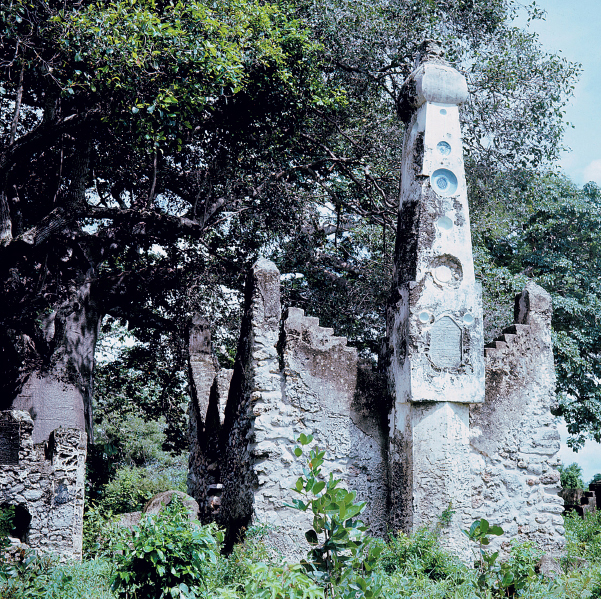Understanding World Societies:
Printed Page 592
> How did the arrival of Europeans and other foreign cultures affect the East African coast, and how did Ethiopia and the Swahili city-states respond to these incursions?

Chinese Porcelain Plates
Embedded in an eighteenth-century Kunduchi pillar tomb, these Chinese plates testify to the enormous Asian-African trade that flourished in the fourteenth to sixteenth centuries. Kunduchi, whose ruins lie north of Dar es Salaam in present-day Tanzania, was one of the Swahili city-states. (Werner Forman Archive/The Bridgeman Art Library)> PICTURING THE PASTANALYZING THE IMAGE: How many Chinese plates can you identify? What features identify this as a tomb?CONNECTIONS: Why would a Muslim African want a Chinese plate embedded in his tomb? What does this suggest about his status, occupation, and wealth?
Embedded in an eighteenth-
EEAST AFRICA IN THE EARLY modern period faced repeated incursions from foreign powers. At the beginning of the sixteenth century Ethiopia faced challenges from the Muslim state of Adal, and then from Europeans. Jesuit attempts to impose Roman Catholic practices met with fierce resistance and ushered in a centuries-